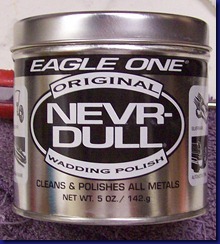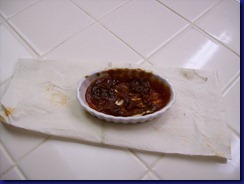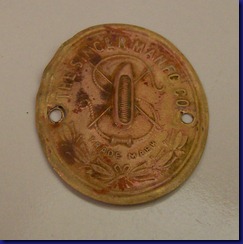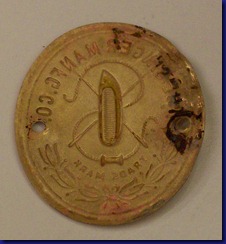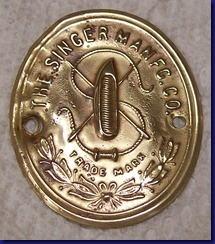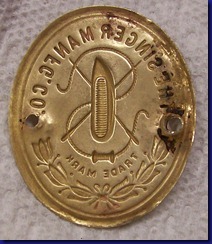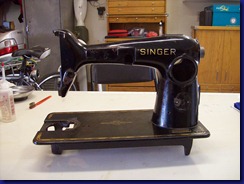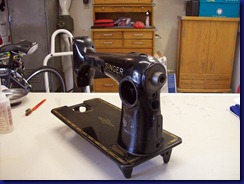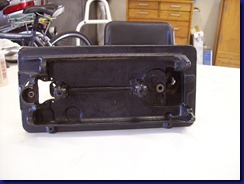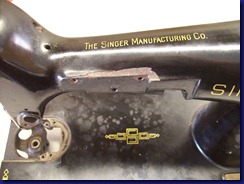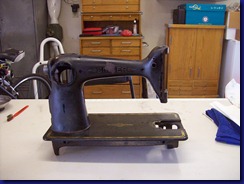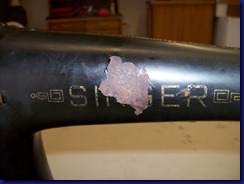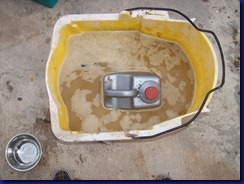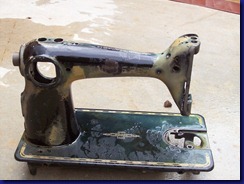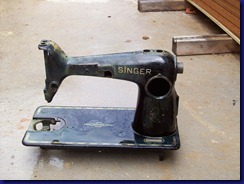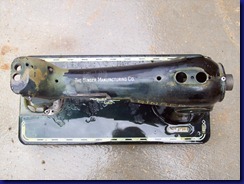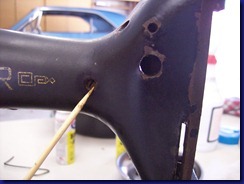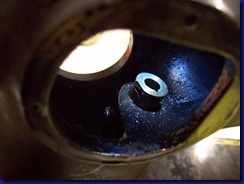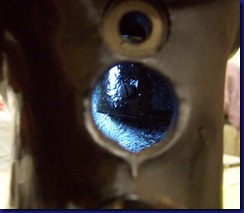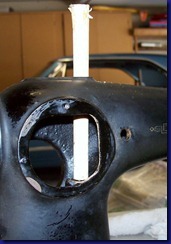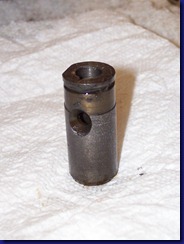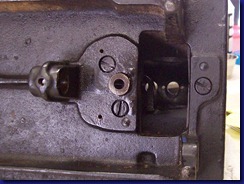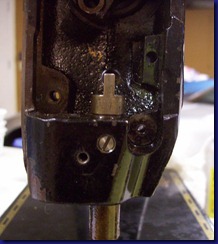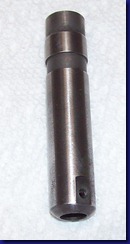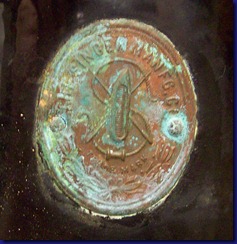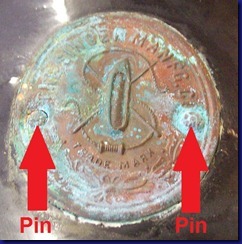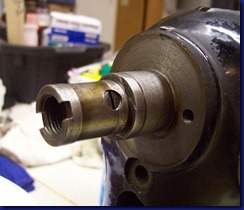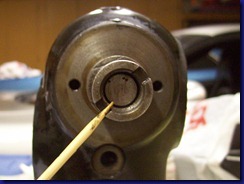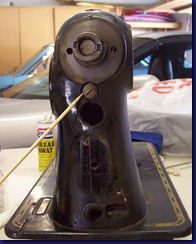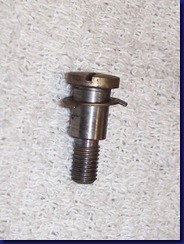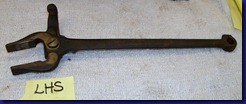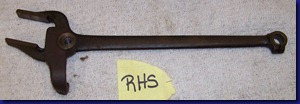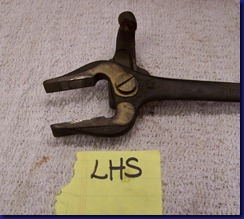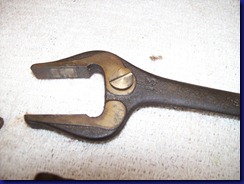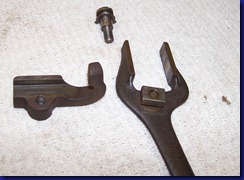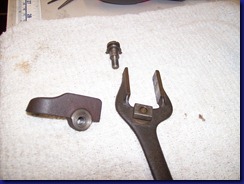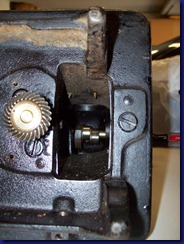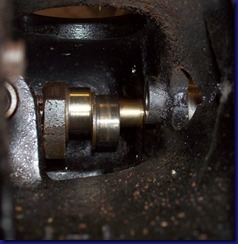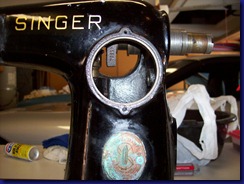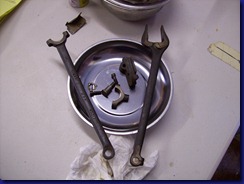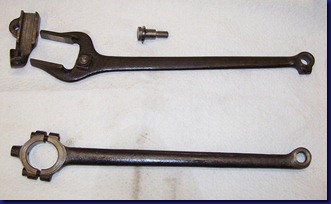The title of this entry is a tad misleading because several other parts need to be removed in this process just allow removal of the Horizontal Arm Shaft (or HAS for short). These include: HAS bushing, HAS bevel gear, counter balanced feed cam, and feed lifting eccentric. Basically, we are now removing most of the remaining guts from Ms. Rusty.
According to the Adjusters Manual, the following parts need to be removed just to begin this project. Fortunately this has already been done in previous posts, but here is the list just in case you are starting from scratch:
Now that we are ready to go, the first step in removing the HAS is to loosen or remove the 2 set screws on the bevel gear. To do this, turn the shaft so the set screws can be accessed through the hole next to the arm side cover.
Hole in Arm Shaft: 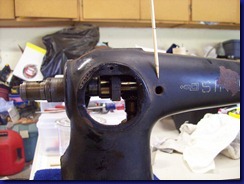
May need a flashlight to see the screw: 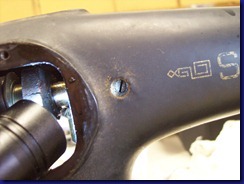
Screwdriver through hole to removed screw from gear: 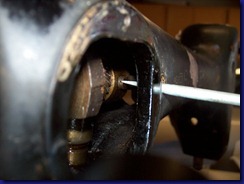
Next, loosen or remove the set screw on the feed cam and feed lifting eccentric.
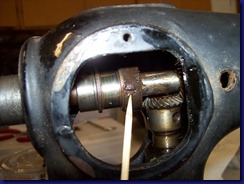
Most set screws look alike and are interchangeable. However, the feed cam set screw is longer and has a more conical tip than the other 2 set screws that were removed from the gear.
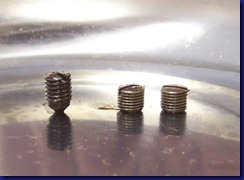
It is important to make sure both the gear and the feed cam is free from the HAS. In Ms. Rusty’s case, it took an application (or 2 or 3) of some break-away to get these free. I also used a bit of force by holding onto the gear and then rotated the HAS using the to ensure it was loose. This was repeated for the feed cam. Unfortunately I don’t have a picture of this since I didn’t have a spare hand to take the picture and my hubby wasn’t around to help.
The next step is to turn the shaft so the set screw in the needle bar crank can be access through the hole in the back side of the arm.
Hole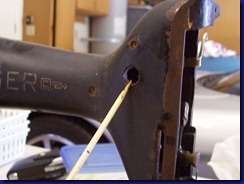 Screw
Screw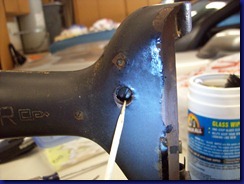
Loosen or remove the screw. This is what it looks like: 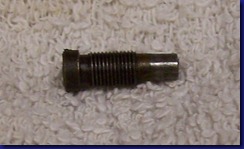
According to the Adjusters Manual, you should now be able to easily remove the needle bar connecting link (complete with stud) and thread take-up crank. HA! I assumed this part couldn’t be removed due to excess gunk and goo so I applied Break-Away liberally to every joint. While that did its job, I decided to move to next step.
Loosen or remove the set screw visible through the hole above last screw removal (see photo below). This releases the thread take-up lever link hinge stud (i.e., it retains the take-up lever assembly).
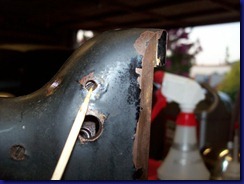
If the hinge stud is difficult to take out (in my case YES) it can be pushed out through the small hole in the right hand side of the machine arm.
Hole in right hand side of machine arm: 
Using metal bar to push out the hinge stud: 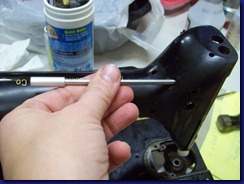
Now that the hinge stud was removed, I went back to trying to remove the needle bar connecting link, but it still wouldn’t budge. After close inspection, I discovered that there was yet another screw hidden by rust! The photo below shows me removing that screw through an access hole.
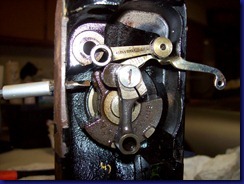
At this point, it was easy to remove the Thread Take-up Lever Assembly, and the Needle bar link, complete with stud (which subsequently fell out) Here is a photo with each of the parts labeled.
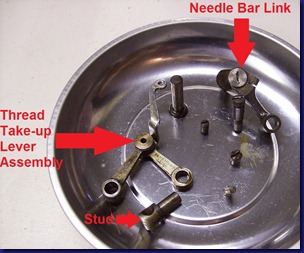
This is a good place to stop and have an adult beverage (or a cookie – your choice), so my next post will cover the actual removal of the HAS.
